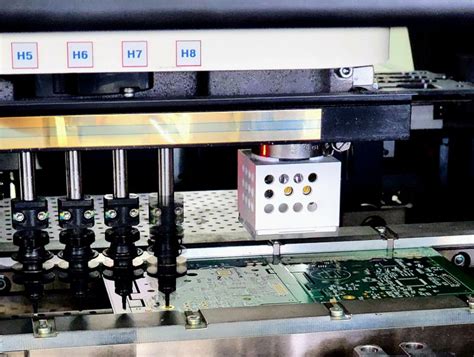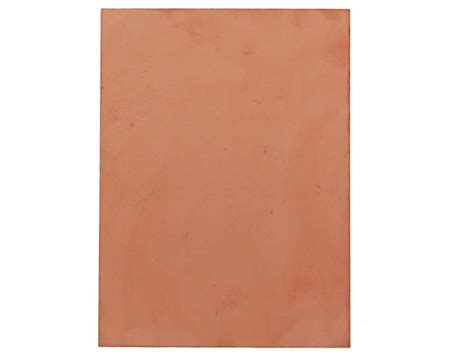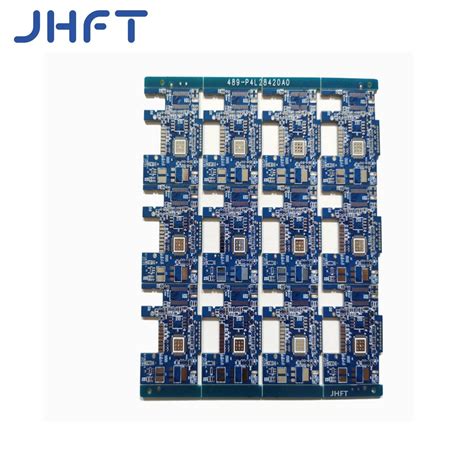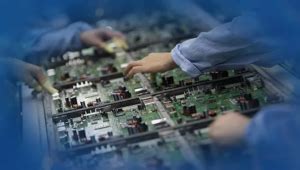Mastering Circuit Card Assembly: A Guide for Innovators
Key Takeaways
Mastering pcb assembly is essential for innovators looking to stay competitive in the electronics industry. Circuit card assembly involves a series of intricate processes that transform design concepts into functional electronic circuits. A pivotal aspect of this process is the integration of pcba techniques, which necessitate a clear understanding of both design and manufacturing principles. Innovators must be adept at selecting appropriate materials and components while ensuring that the design adheres to industry standards, ultimately affecting reliability and performance. It is also crucial to implement effective best practices throughout the production process, as this can significantly reduce errors and enhance overall quality. Moreover, the ability to anticipate common challenges in circuit card assembly allows innovators to devise strategies that mitigate risks, ensuring a smoother production workflow. As technology continues to evolve, staying informed about advanced tools and emerging trends in pcb assembly will empower innovators to push the boundaries of what’s possible, paving the way for future developments in electronic solutions.
Introduction to Circuit Card Assembly: Understanding the Basics
Circuit card assembly, often referred to as PCBA, is a crucial process in the realm of electronics, encompassing the fabrication and integration of various electronic components onto a printed circuit board (PCB). This foundational aspect of electronics manufacturing involves several steps, including design, layout, and soldering. Understanding these steps is essential for innovators aiming to excel in this field.
The journey begins with the design phase, where various considerations such as component placement, trace routing, and signal integrity play vital roles. A well-thought-out design can significantly affect the performance of the entire assembly. Here, tools like CAD software are commonly utilized to create accurate layouts that guide subsequent stages.
Manufacturing follows design and often involves several techniques including surface mount technology (SMT) and through-hole technology. These methods determine how components are attached to the PCB, directly influencing factors such as reliability and production costs.
| Step | Description |
|---|---|
| Design | Creating a schematic layout using CAD tools |
| Component Placement | Arranging components on the PCB |
| Soldering | Joining components using solder |
Moreover, understanding common challenges such as thermal management and component misalignment is crucial for achieving successful assembly. Employing best practices can help in mitigating these issues, ensuring that each PCB assembly meets industry standards and performs reliably.
“Attention to detail during circuit card assembly can save significant costs in later production stages.”
In summary, grasping the essentials of circuit card assembly provides a strong foundation for those looking to innovate in electronics. With knowledge of key techniques and best practices, innovators will be well-prepared to tackle real-world challenges in pcb assembly effectively.
Key Techniques in Designing Circuit Boards
Designing circuit boards, or PCB assembly (also known as PCBA), requires a combination of creativity, precision, and technical knowledge. One of the fundamental techniques lies in understanding the layout principles; effective utilization of space while ensuring minimal interference between circuit paths is crucial. Attention to the layer stack-up is equally important, as it directly impacts signal integrity and electromagnetic interference. Innovators should consider employing advanced software tools for layout design, enabling easier manipulation of complex geometries and automating some aspects of the design process. Furthermore, selecting appropriate component placement techniques can enhance both performance and manufacturability. Strategic placement minimizes the length of traces, which can significantly reduce signal delay and potential cross-talk between components. Adequate spacing between components not only aids in thermal management but also facilitates easier soldering during the PCB assembly process. Lastly, incorporating design for manufacturability (DFM) principles ensures that designs are not only innovative but also adhere to practical manufacturing constraints. Such practices empower inventors to create reliable and efficient electronic systems that meet modern demands while pushing the boundaries of technology. By mastering these key techniques, innovators can successfully navigate the complexities associated with circuit card assembly, paving the way for exceptional electronic product development.
Best Practices for Manufacturing Circuit Card Assemblies
Manufacturing circuit card assemblies (also known as PCBA) requires a meticulous approach to ensure efficiency and quality. Implementing best practices throughout the manufacturing process can significantly enhance the reliability and performance of the final product. One key element is the careful selection of components; using high-quality materials not only boosts durability but also reduces the risk of failures during operation. Additionally, effective design layout is crucial, as it influences heat dissipation and signal integrity, ultimately affecting the overall functionality of the assembled circuitry. Another important practice is to maintain a clean and controlled environment during assembly to prevent contamination, which can lead to defects in pcb assembly. This includes adhering to static-sensitive handling procedures and ensuring that all equipment is well-maintained and calibrated regularly. Equally vital is fostering open communication between design engineers and assembly technicians, which helps in identifying potential issues early in the process. Finally, implementing rigorous testing protocols post-assembly can catch faults that may not have been apparent earlier, ensuring that only reliable products reach the market. In summary, by focusing on these best practices, manufacturers can create superior circuit card assemblies that meet stringent performance standards while also driving innovation in their offerings.
Common Challenges in Circuit Card Assembly and How to Overcome Them
In the realm of pcb assembly, several challenges can arise that may hinder the efficiency and quality of the pcba process. One predominant challenge is the alignment accuracy during assembly, as even minor misalignments can lead to functional failures. To combat this, employing advanced machinery that utilizes vision systems can help ensure components are placed correctly on the circuit board. Another issue is related to thermal management; overheating during soldering can damage sensitive components, resulting in reduced reliability. Utilizing effective thermal profiling techniques and specialized PCB materials designed for heat resistance are critical strategies to mitigate this risk. Additionally, surface mount technology (SMT) has revolutionized circuit card assembly, but it also presents difficulties such as component solderability due to residues or oxidation. Implementing stringent cleaning protocols and using compatible flux can enhance solder joint reliability. Finally, with modern designs becoming increasingly complex, maintaining a balance between circuit density and ease of assembly remains essential; adopting a modular approach during the design phase can alleviate complications during manufacturing. By understanding these common challenges in circuit card assembly and applying targeted solutions, innovators can significantly improve both the efficiency and effectiveness of their pcba processes.
Advanced Tools and Technologies in Circuit Board Production
In the evolving landscape of pcb assembly, advanced tools and technologies play a pivotal role in enhancing efficiency and precision. Modern pcba processes leverage innovative equipment such as automated pick-and-place machines that streamline component placement, ensuring accuracy and reducing human error. Additionally, the integration of 3D printing within circuit card assembly offers unparalleled flexibility in prototyping and testing circuit designs. This allows innovators to create complex geometries that traditional methods cannot easily replicate. Furthermore, machine vision systems are becoming increasingly common, providing real-time inspection capabilities that enhance quality control during production. These technologies not only increase the throughput but also maintain a high level of reliability, which is paramount in circuit card assemblies used in sensitive applications like medical devices and aerospace systems. By embracing these advanced tools, manufacturers can stay competitive while also meeting the evolving demands of the market, ultimately paving the way for breakthroughs in design versatility and production efficiency.
Quality Control in Circuit Card Assembly: Ensuring Reliability
In the realm of pcb assembly, quality control stands as a critical pillar that ensures the reliability and functionality of the final product. The processes involved in pcba are complex, involving numerous components that must work seamlessly together. To achieve optimal quality, it is essential to implement a systematic approach that includes rigorous inspection and testing. This begins with selecting high-quality materials and components, followed by adhering to precise design specifications throughout the circuit card assembly process. Regular evaluations using both automated and manual inspections help identify any potential defects early on, thus minimizing rework and ensuring adherence to industry standards. Moreover, employing advanced technologies such as automated optical inspection (AOI) and X-ray inspection can significantly enhance fault detection capabilities, allowing for immediate corrective actions to be taken. Ensuring consistent training for personnel involved in pcb assembly also contributes to maintaining high-quality standards, as skilled workers are more adept at recognizing issues before they become critical problems. Overall, a robust quality control system not only reinforces the reliability of circuit card assemblies but also instills confidence in customers regarding the performance of their devices.
Future Trends in Circuit Card Assembly: Innovations to Watch
As technology continues to evolve, so does the world of pcb assembly and pcba. One significant trend is the increasing use of automated processes, which enhance efficiency and reduce human error in circuit card assembly. Automation leverages cutting-edge robotics and intelligent software, enabling manufacturers to produce high-quality circuit boards with faster turnaround times. Additionally, there is a growing focus on miniaturization, where components are becoming smaller while maintaining their performance capabilities. This trend not only allows for more compact designs but also fuels the demand for innovative packaging methods that can accommodate these advanced circuit card assemblies.
Another key development is the incorporation of artificial intelligence (AI) in quality control processes. By utilizing AI algorithms to predict failures and identify defects, manufacturers can achieve unprecedented levels of reliability in pcb assembly. This predictive maintenance approach not only enhances product quality but also optimizes production schedules by minimizing downtime.
Furthermore, sustainability is becoming a core consideration in circuit card assembly. The industry is seeing a shift towards environmentally friendly materials and processes, which aligns with global efforts to reduce electronic waste. By adopting practices such as lead-free soldering and recyclable components, companies contribute positively to environmental sustainability while meeting increasingly stringent regulations.
In summary, the future of pcba presents exciting possibilities driven by automation, miniaturization, AI advancements, and a commitment to sustainability. These trends are reshaping how innovators approach circuit card assembly, paving the way for more efficient production methods and high-quality electronic products that meet modern demands.
Case Studies: Successful Circuit Board Designs and Assemblies
Examining successful pcb assembly cases offers invaluable insights into the multifaceted world of circuit card assembly. For instance, one remarkable case involved the development of a highly efficient medical device, where the design team utilized innovative pcba techniques to optimize space and enhance functionality. The integration of advanced materials and components allowed for a compact layout that minimized electromagnetic interference while ensuring a seamless power supply. Another noteworthy example is the aerospace industry, where stringent reliability standards demand meticulous attention to detail in circuit card assemblies. In this case, engineers incorporated redundancy in critical pathways to maintain operational integrity under extreme conditions. These success stories highlight how applying best practices in pcb assembly can lead to significant advancements in both performance and reliability, inspiring future innovators to pursue excellence in their own designs. Each case serves as a testament to the importance of creative problem-solving and adherence to robust engineering principles in developing exceptional pcba solutions. Through real-world applications, innovators can learn that each challenge faced during circuit card assembly can be transformed into an opportunity for innovation and improvement, ultimately contributing to advancements across various industries.
Conclusion
In the world of pcb assembly, it is essential for innovators to grasp the full spectrum of techniques and practices that contribute to circuit card assembly. The complexity of assembling pcba not only involves the selection of high-quality components but also the application of industry standards and innovative technologies that improve efficiency and reliability. By understanding the challenges and advancements outlined in this guide, one can appreciate how strategic design choices impact the overall performance of circuit boards. As new materials and manufacturing methods are introduced, staying up-to-date with the latest trends in pcb assembly will be crucial for anyone looking to lead in this field. Ultimately, mastery in circuit card assembly requires a commitment to continuous learning and adaptation, ensuring that products are not only functional but also aligned with emerging developments in technology.
FAQs
Q: What is PCB assembly?
A: PCB assembly, often referred to as PCBA, is the process of connecting electronic components to a printed circuit board (PCB) to create a functional assembly. This includes soldering components onto the board, testing, and ensuring that all connections are secure and operational.
Q: What are the common types of PCB assembly techniques?
A: There are several techniques used in pcb assembly, including Surface Mount Technology (SMT) and Through-Hole Technology (THT). SMT involves mounting components directly onto the surface of the PCB, while THT requires components to be inserted into drilled holes on the board.
Q: How can I ensure quality in my PCB assembly?
A: Quality control in pcba involves several steps, including rigorous testing procedures such as Automated Optical Inspection (AOI) and Functional Testing. It’s vital to maintain clear communication with manufacturers regarding specifications and standards to ensure your assemblies meet desired quality levels.
Q: What challenges are typically faced during PCB assembly?
A: Common challenges in circuit card assembly include misalignment of components, soldering defects, and material shortages. Implementing best practices such as thorough planning, using high-quality materials, and maintaining skilled labor can help overcome these issues.
Q: What future trends should I watch for in circuit card assemblies?
A: Emerging trends in pcb assembly include advancements in automation technology, increased use of AI for quality inspections, and eco-friendly materials for production. Keeping abreast of these innovations can significantly enhance your design and manufacturing processes.







